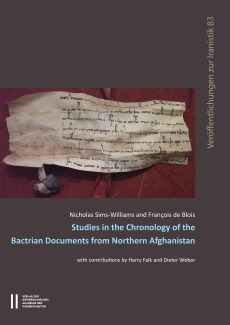Francois de Blois / Nicholas Sims-Williams
Studies in the Chronology of the Bactrian Documents from Northern Afghanistan
with contributions by Harry Falk and Dieter Weber
Reihe herausgegeben von Bert G. Fragner, Reihe herausgegeben von Florian Schwarz
Reihe: Denkschriften der philosophisch-historischen Klasse, Veröffentlichungen zur IranistikMore than 150 documents in Bactrian, the chief administrative language of pre-Islamic Afghanistan, have come to light during the last twenty-five years. These documents include letters, legal contracts, economic documents and a few Buddhist texts; many of them bear dates in the so-called “Bactrian era”, which is also known from a few inscriptions, such as the Tochi valley inscriptions in Pakistan, but whose starting-point is controversial. The Bactrian documents have the potential to transform our knowledge of the history of the region during the 4th to 8th centuries CE, a period for which we have few contemporary records, but before they can be fully exploited as historical sources it is necessary to establish their relative and absolute chronology. The present volume aims to fulfil this need. In Part 1 we consider the dated documents, discussing the nature of the Bactrian calendar and the epoch of the Bactrian era, and concluding with a conspectus in which all the attested dates are converted to Julian dates on the basis of the facts and arguments presented. In Part 2 we turn to the equally important undated documents, systematically weighing up all types of evidence, whether historical, prosopographical, palaeographical, linguistic or orthographic, which may have a bearing on their dating. Part 3 provides a handy check-list of our conclusions, while the Appendices provide additional and supporting material including editions of the Tochi valley inscriptions and of a Pahlavi letter which was purchased together with the Bactrian documents.
This book will be required reading for scholars and students of the pre-Islamic and early Islamic history of Iran, Afghanistan and Central Asia. It will also be a useful resource for those interested in the languages, religions and numismatics of the region.
